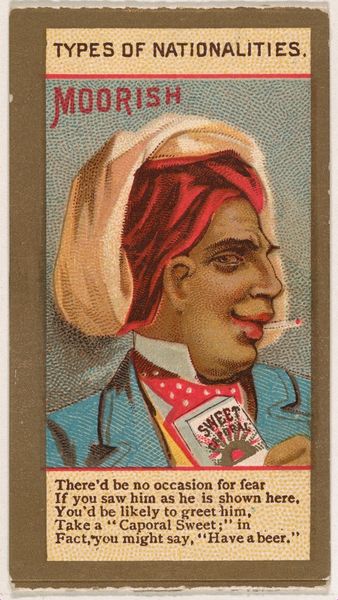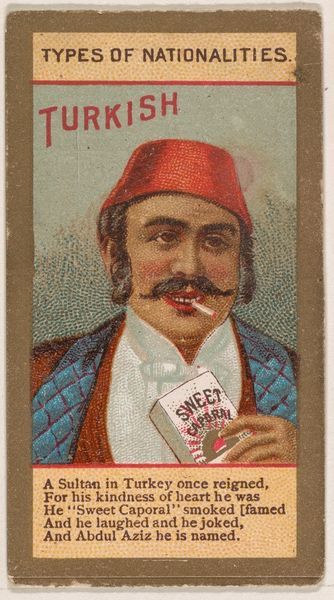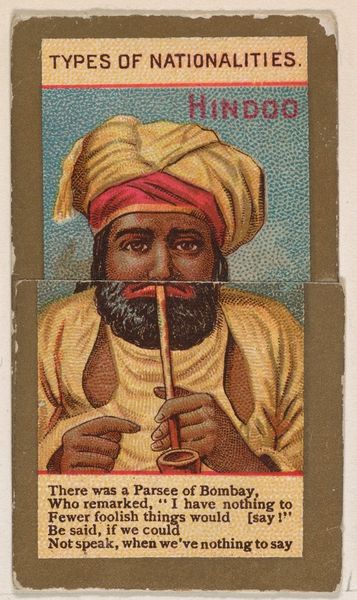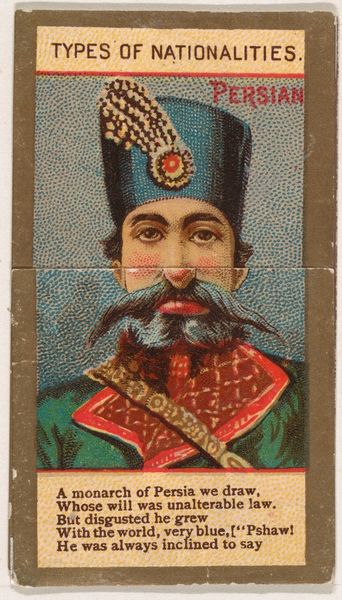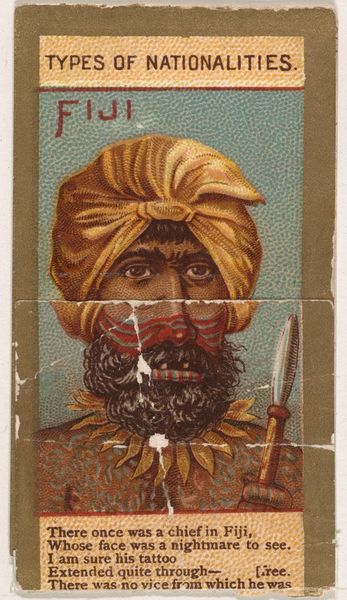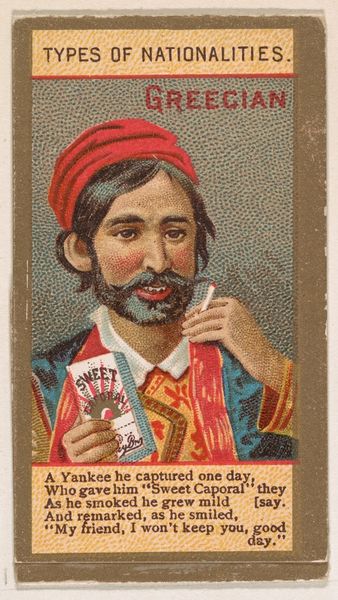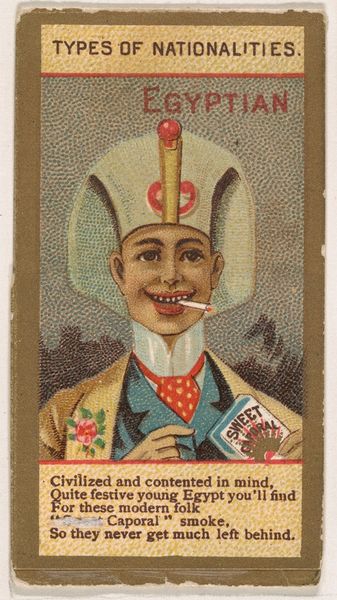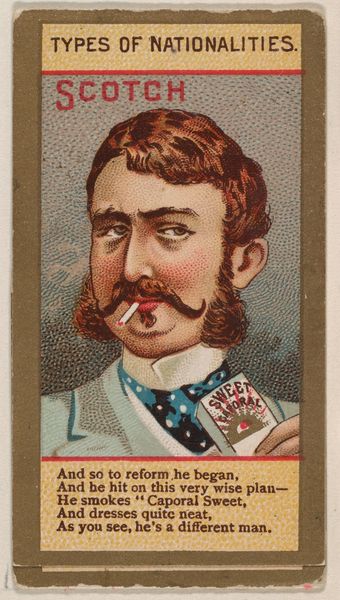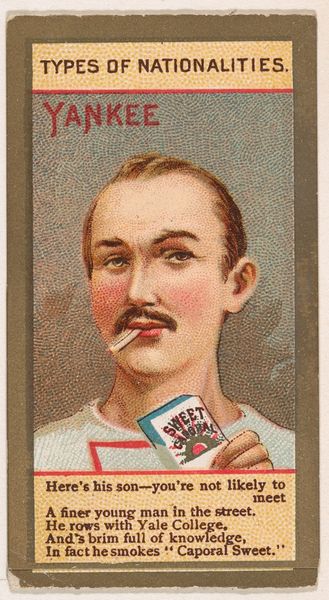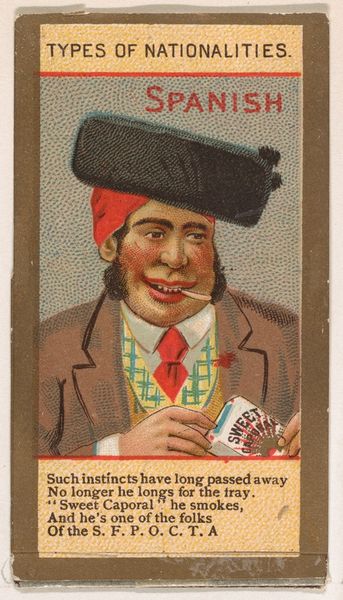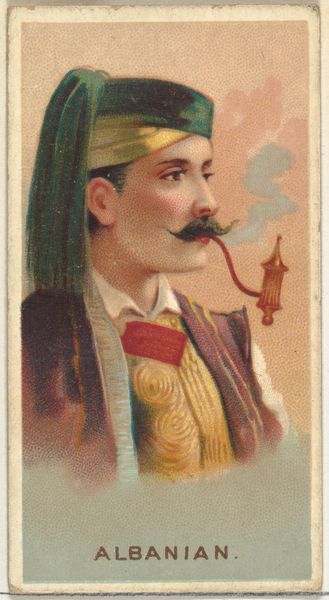
Fiji, from Types of Nationalities (N240) issued by Kinney Bros. 1890
0:00
0:00
Dimensions: Sheet (Folded): 2 11/16 × 1 7/16 in. (6.8 × 3.7 cm) Sheet (Unfolded): 6 7/8 × 1 7/16 in. (17.4 × 3.7 cm)
Copyright: Public Domain
Editor: So, here we have "Fiji, from Types of Nationalities" printed around 1890 by Kinney Bros. It appears to be a print, probably a chromolithograph, made as a tobacco card. I'm struck by the caricature – how do you interpret this work from a formal perspective? Curator: Formally, the piece presents a curious tension. Observe the meticulous detail given to the textures – the turban, for instance, and the stylized patterns in the background. This contrasts sharply with the exaggeration of the facial features and the somewhat crude linework around the eyes and mouth. How do these contrasting visual elements work together to create meaning? Editor: I guess it's this juxtaposition of the refined technique with the caricature style that is striking. It does seem deliberate. Curator: Precisely. Consider also the composition – the figure is centrally positioned, almost like an icon. Yet the inclusion of the text beneath undermines this sense of solemnity. How does this positioning and inclusion of text affect the viewer's interpretation? Editor: The poem and the cigarette box really disrupt the portrait-like qualities, but I see that the repetition of color in the text box is connected to the figure's color scheme. Curator: Indeed, color plays a key role. The muted, earthy tones of the figure are grounded by the vibrant reds and blues. The color choices invite the viewer to consider not just the aesthetic of the piece but its conceptual underpinnings. What relationship can we consider? Editor: Well, now I see how the bright colors make the figure more alive, but it also underscores the artifice, or the performance of a culture in a sense. It's not about true representation but using colors to show cultural characteristics. Curator: An astute observation. By focusing on the interplay of form and content, we begin to see how the artwork operates as a signifier, both reflecting and perpetuating prevailing ideologies of its time. It uses both to give meaning and context to itself.
Comments
No comments
Be the first to comment and join the conversation on the ultimate creative platform.


